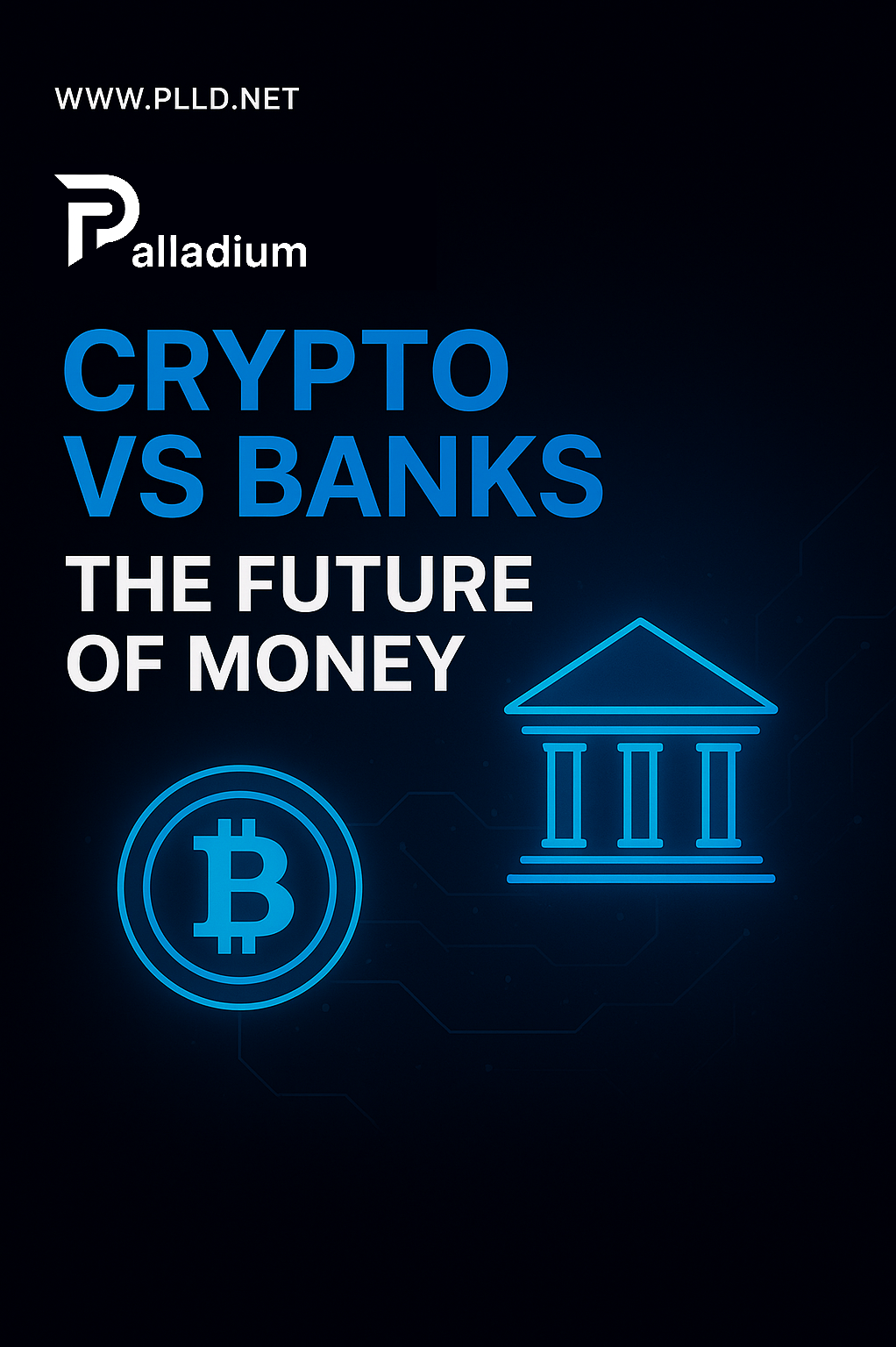The financial system is changing faster than ever, and one of the central debates shaping this evolution is Crypto vs Traditional Banks. Both play vital roles in managing and moving money, yet they represent two very different philosophies — one centralized and regulated, the other decentralized and open to all.
The Traditional Banking System
For centuries, banks have been the backbone of global finance, offering security, trust, and regulated access to money. They provide essential services such as savings accounts, loans, and international payments — all under government oversight and protection.
Strengths: Banks deliver a sense of safety and reliability. Deposits are often insured, systems are heavily regulated, and users benefit from established financial frameworks. For most people, banks remain the trusted link between personal finance and the global economy.
Limitations: Traditional banking can be slow, expensive, and exclusionary. International transfers may take days and involve high fees, while billions of people globally still lack access to basic banking services. Moreover, centralized control gives institutions and governments significant power over how funds move.
The Crypto Revolution
Cryptocurrency introduces a radically different approach — one based on decentralization, transparency, and autonomy. Through blockchain technology, transactions occur directly between users, without the need for intermediaries like banks.
Advantages: Crypto enables peer-to-peer transfers that are faster, cheaper, and globally accessible. Blockchain’s transparent ledger ensures accountability, and users retain full ownership of their funds without dependence on centralized authorities.
Challenges: Despite its potential, crypto remains volatile and faces regulatory uncertainty. Governments are still developing frameworks to address taxation, compliance, and consumer protection. Additionally, poor wallet security or scams can lead to irreversible losses.
The Emerging Middle Ground
Rather than a competition, the future is increasingly pointing toward collaboration. Banks are beginning to integrate blockchain for faster payments and improved security. Some are exploring stablecoins and tokenized assets to modernize their systems. Meanwhile, the crypto sector is evolving toward better regulation and institutional adoption, bridging the gap between traditional and decentralized finance.
Conclusion
The conversation isn’t just about banks versus crypto — it’s about how both can coexist to build a more inclusive, efficient financial ecosystem. Banks bring trust and structure; crypto brings innovation and freedom. Together, they have the potential to redefine how money works in a connected, digital world where technology and trust finally converge.
